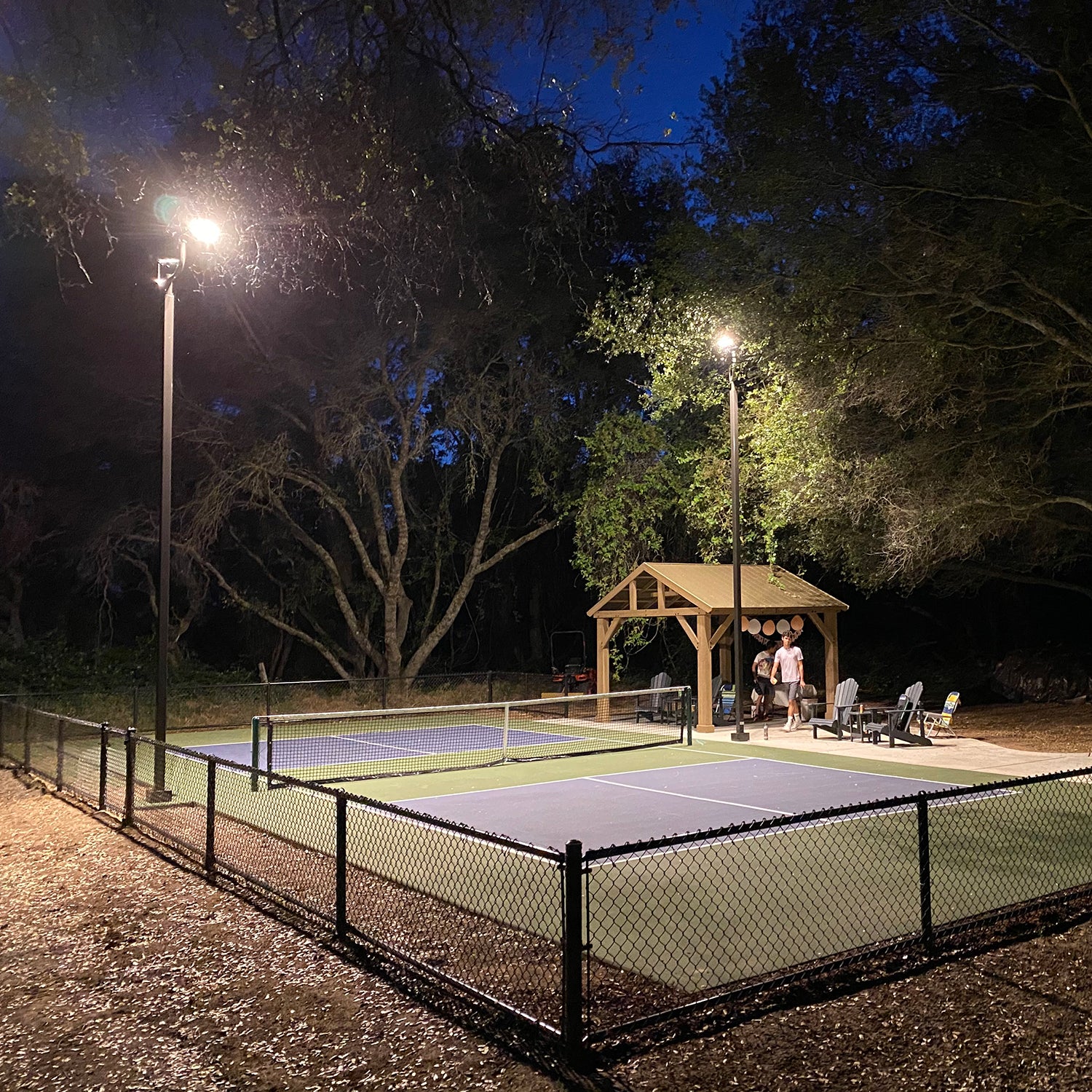Vital Steps for Successful Pickleball Court Construction in Your Community
Vital Steps for Successful Pickleball Court Construction in Your Community
Blog Article
Increase Local Interaction With Community-Driven Pickleball Court Projects
The emergence of community-driven pickleball court projects presents an unique possibility to foster regional interaction and reinforce area ties. By actively involving residents in the planning and implementation phases, such campaigns not just produce leisure spaces however also advertise a shared feeling of ownership. Recognizing the steps to initiate these tasks, including efficient stakeholder engagement and resource allocation, is important. The genuine concern stays: just how can these grassroots initiatives be tactically implemented to make certain sustainability and inclusivity in diverse areas? Discovering effective situation researches might offer the insights required to address this essential problem.
Value of Neighborhood Interaction
Community interaction is an important component in the successful development of pickleball court jobs, as it promotes a sense of ownership and collective responsibility among locals. When neighborhood members are actively associated with the preparation and execution stages, they are more most likely to support for the job's long-lasting success. Engaging stakeholders such as local players, family members, and entertainment teams makes sure that the centers fulfill the varied demands and preferences of the community.
Moreover, neighborhood interaction grows a helpful atmosphere where homeowners really feel empowered to contribute their ideas and resources. Pickleball court construction. This collaborative method can lead to innovative options that boost the layout and functionality of the courts, making them extra attractive to a bigger audience. In addition, including homeowners in decision-making procedures can strengthen social ties, advertising inclusivity and unity within the neighborhood
The visibility of area support for a pickleball task can likewise play a pivotal role in protecting funding and authorization from neighborhood authorities. By demonstrating a shared dedication to leisure growth, neighborhoods can effectively promote for resources and plan modifications that prefer the establishment of pickleball courts, eventually enriching the neighborhood society and entertainment landscape.
Steps to Launch a Project
Starting a pickleball court job requires a methodical method that improves the foundation of neighborhood involvement developed in previous discussions. The very first action is to put together a task board consisting of regional stakeholders, lovers, and reps from relevant organizations. This varied group ensures that several viewpoints are considered.
Next, carry out a requirements assessment within the community. Surveys, focus teams, and public conferences can be efficient in determining interest and event input on potential court places, wanted features, and organizing choices. Following this, create a task strategy outlining timelines, goals, and duties.
As soon as the strategy is in place, involve with neighborhood authorities to recognize zoning regulations and any required licenses. Interacting transparently with the community throughout this process is essential, as it fosters depend on and encourages more engagement.
Furthermore, organizing community events can aid keep momentum and enthusiasm. These events can work as platforms for further discussion and aid to enhance neighborhood ties. Lastly, document every action taken and preserve comprehensive documents, as this will certainly be useful for future stages of the project, including financing and source purchase.
Financing and Resources Available
Protecting financing and resources for a pickleball court project is usually a critical action that can identify the task's feasibility and success. Different best site opportunities exist for obtaining economic support, ranging from public financing to personal sponsorships. City government grants, usually targeted at advertising neighborhood health and entertainment, can provide considerable sponsorship for such campaigns.
Along with government sources, nonprofit organizations and structures frequently use grants particularly for sporting activities and community advancement tasks. Engaging neighborhood services as enrollers can additionally be a worthwhile strategy; several firms aspire to purchase community efforts that boost their corporate social obligation profile.
Crowdfunding systems have become a practical choice for grassroots fundraising, making it possible for area participants to add straight to the task. This approach not only raises funds but also promotes a feeling of possession amongst click for info individuals.
Style and Preparation Considerations
Effective design and planning are fundamental components of any effective pickleball court job complying with the purchase of funding and resources. A complete analysis of the recommended place is necessary; this consists of examining availability, distance to existing area features, and the capacity for visibility and engagement.
The format of the court have to abide by main size specifications while taking into consideration the bordering atmosphere. Incorporating functions such as seats, shade frameworks, and proper illumination can considerably enhance gamer experience and viewer pleasure. Materials chosen for the court surface ought to focus on longevity and security, with options like acrylic or asphalt offering optimum performance.
Involving area participants in the design procedure fosters a feeling of ownership and ensures that the center meets regional needs - Pickleball court construction. This can be attained with public appointments and studies, allowing stakeholders to reveal their choices and worries
Sustainability ought to also be a top priority; integrating environmentally friendly products and practices can add to long-term stability. Lastly, developing a maintenance strategy to make certain the court stays in outstanding problem will support recurring community interaction and engagement in pickleball activities.

Success Stories and Case Researches
Highlighting the transformative impact of community-driven initiatives, numerous success stories highlight exactly how collaborative efforts have resulted in the growth of dynamic pickleball courts across different regions. One anonymous noteworthy example is the effort in a town in Florida, where locals grouped to convert an underutilized tennis court right into a specialized pickleball facility. With fundraising events and collaborations with local businesses, the area raised enough funds to install brand-new nets, resurfacing, and lines, eventually cultivating a dynamic hub for neighborhood players.
In a similar way, in a suburb of California, a grassroots activity arised to produce pickleball courts in a neighborhood park. The project not only involved volunteers for construction but additionally included workshops to involve area participants in the sporting activity. Consequently, the courts came to be a focal factor for social interaction and fitness, attracting players of every ages.
These study exhibit exactly how community-driven projects can enhance neighborhood interaction, advertise exercise, and enhance social bonds. By leveraging cumulative sources and excitement, neighborhoods can efficiently develop and maintain pickleball facilities that offer diverse populations and cultivate a sense of belonging.

Final Thought
Finally, community-driven pickleball court jobs work as crucial instruments for enhancing regional interaction and promoting a sense of belonging among citizens. By prioritizing stakeholder involvement throughout the preparation and application phases, these campaigns can properly resolve diverse area needs. Additionally, leveraging available resources and taking a look at effective situation research studies can provide beneficial insights for future projects. Inevitably, such efforts contribute to the transformation of public rooms right into dynamic centers of health and fitness and social communication, strengthening neighborhood connections.
The appearance of community-driven pickleball court tasks presents an one-of-a-kind chance to foster local involvement and enhance neighborhood ties.Area interaction is a vital element in the effective advancement of pickleball court projects, as it cultivates a feeling of possession and collective obligation amongst locals. When neighborhood members are proactively included in the planning and execution stages, they are much more likely to promote for the project's lasting success.Launching a pickleball court task needs an organized strategy that develops on the structure of neighborhood involvement developed in previous conversations. The task not only engaged volunteers for building but likewise included workshops to engage community members in the sport.
Report this page